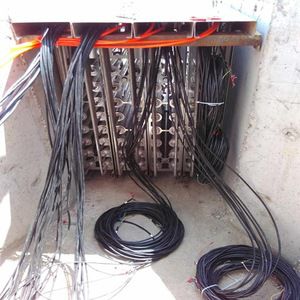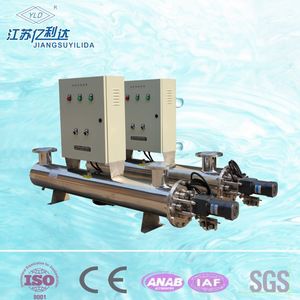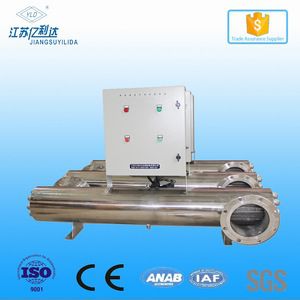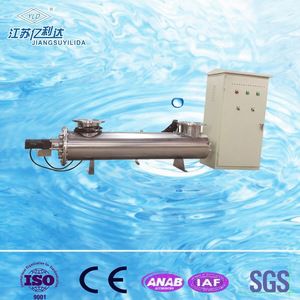What do water softeners do?
Industrial water softeners are specific ion exchangers that are designed to remove ions which are positively charged.
Softeners mainly remove calcium (Ca2+) and magnesium (Mg2+) ions. Calcium and magnesium are often referred to as "hardness minerals". Softeners are sometimes even applied to remove iron.
The softening devices are able to remove up to five milligrams per liter (5 mg/L) of dissolved iron and can operate automatic, semi-automatic, or manual. Each type is rated on the amount of hardness it can remove before regeneration is necessary. Commercial water softeners collect hardness minerals within its conditioning tank and from time to time flushes them away to drain.
When an ion exchanger is applied for water softening, it will replace the calcium and magnesium ions in the water with other ions, for instance sodium or potassium. The exchanger ions are added to the ion exchanger reservoir as sodium and potassium salts (NaCl and KCl).
Control mode of fully automatic water softener
Single tank time type: it adopts microcomputer to control the time, when operation of the equipment reaches setting time, it will automatically enter the regeneration condition, which can be regenerated for once a day or once for some day.
Single tank flow type: it adopts control of turbine flow or electronic flow sensor, when the yield of softener reaches preset flow it will automatically enter the regeneration condition, which can be recycled many times every day.
Double tanks flow type: which could be divided into one running-one alternating, and simultaneous running and separately regeneration.
One running and the other alternation type: one tank is running while the other is alternating, when water yield of operating tank reaches the preset flow rate, it will enter the regeneration stage, meanwhile, the other tank will enter the working state, these two tanks work and regenerate alternatively to realize continuous water supplying of 24 hours.
Simultaneous running and separately regeneration type: two cans running simultaneously, when the flow rate reaches the setting rate, one tank (can) will regenerate and the other tank will output water continuously, when the first regeneration tank finish the regeneration it will enter the working stage, the other one will enter regeneration stage, these two cans finish regeneration and enter working state simultaneously.
Specification :
§ Material of construction MS/FRP/MSRL/SS.
§ Designed as per ASME.
§ Well designed distribution system.
§ Well designed collection system.
§ High end water quality.
§ Suited regeneration time for various application.
§ High replacement of calcium and magnesium.

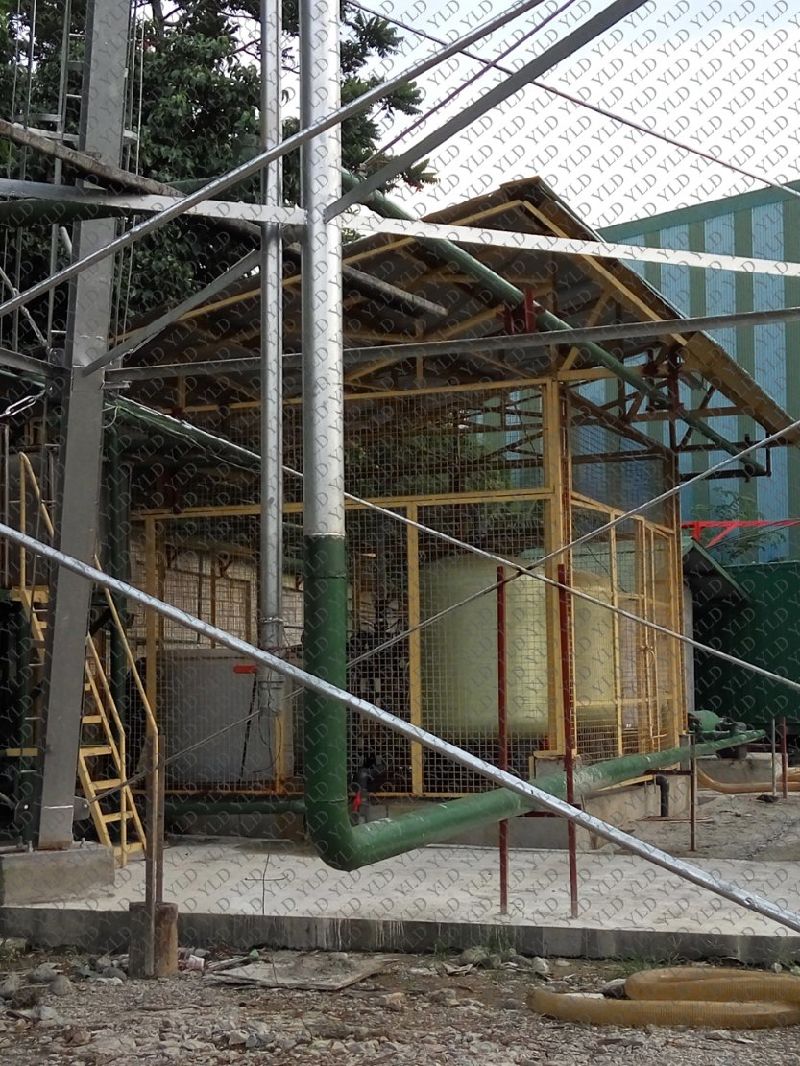
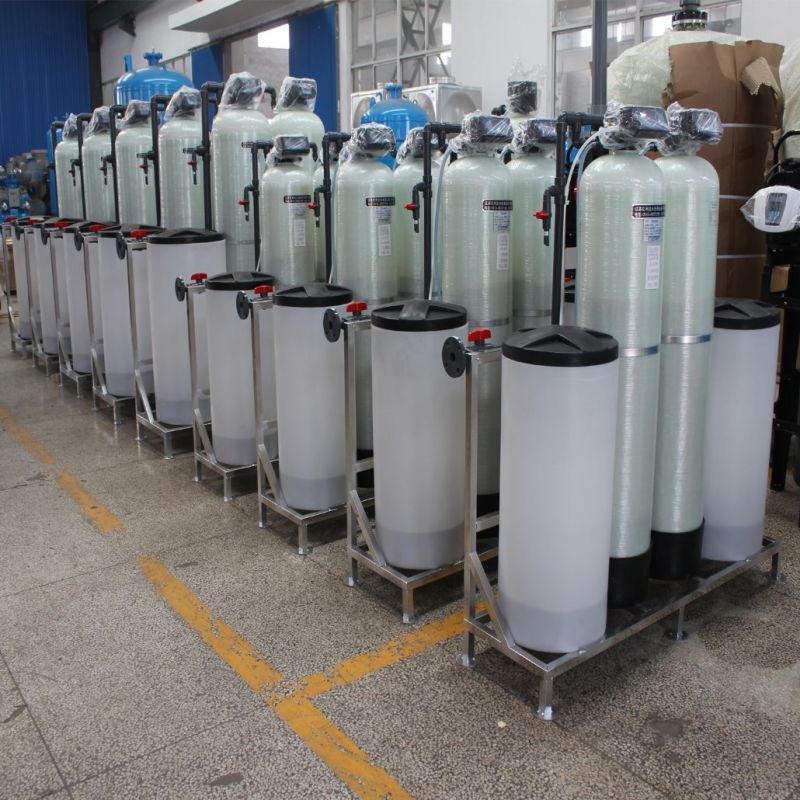
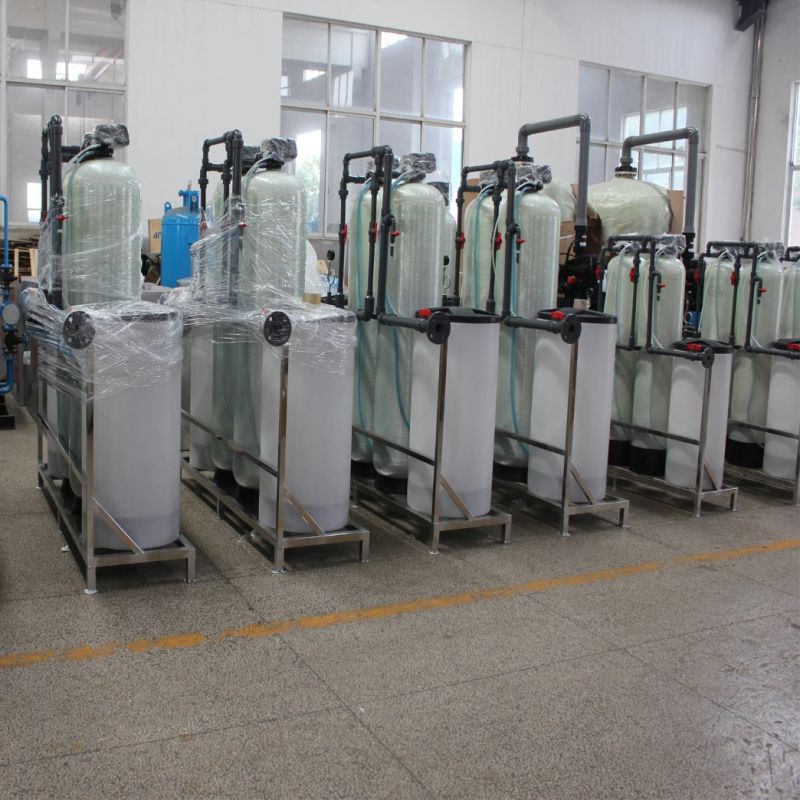
Application
§ Industrial Process Water.
§ Hospitals & Laundries.
§ Automobiles industries.
§ Domestic application.
§ Pre treatment of water.
§ Boilers and Cooling towers.
Technical parameters:
| Category | Model | Recommended water yield (M³/h) | Tank size Diameter *Height(mm) | Salt box (L) | Amount of resin(KG) |
| Dual-valve and dual-tank (simultaneous operation and respective regeneration) | YL-II-36 | 24-36 | 900×1900 | 800 | 1040 |
| YL-II-50 | 36-50 | 1000×2200 | 1000 | 1440 | |
| YL-II-70 | 50-70 | 1200×2400 | 1500 | 2000 | |
| YL-II-100 | 70-100 | 1500×2500 | 2000 | 3200 | |
Dual-valve and dual-tank(One for use and the other for standby) | YL-II-1 | 1 | 250×1400 | 60 | 80 |
| YL-II-2 | 2 | 300×1400 | 100 | 120 | |
| YL-II-3 | 3 | 350×1400 | 100 | 160 | |
| YL-II-4 | 4 | 400×1650 | 200 | 240 | |
| YL-II-5 | 5 | 500×1750 | 300 | 360 | |
| YL-II-6 | 6 | 600×1900 | 350 | 480 | |
| YL-II-10 | 8-10 | 750×1900 | 500 | 720 | |
| YL-II-18 | 12-18 | 900×1900 | 800 | 1040 | |
| YL-II-25 | 18-25 | 1000×2200 | 1000 | 1440 | |
| YL-II-35 | 25-35 | 1200×2400 | 1500 | 2000 | |
| YL-II-50 | 35-50 | 1500×2500 | 2000 | 3200 |
Our services:
We provide 24 hours online customer service.
Any inquiry about water treatment system, please feel free to contact me for further details!
Contact information:
Mobile phone: +86 13585066069
Website: http://yldwater.en.made-in-china.com
Official website: www.zgyld.com
Guarantee period:1 year
After-sale service:800-827-87-226


 China
China